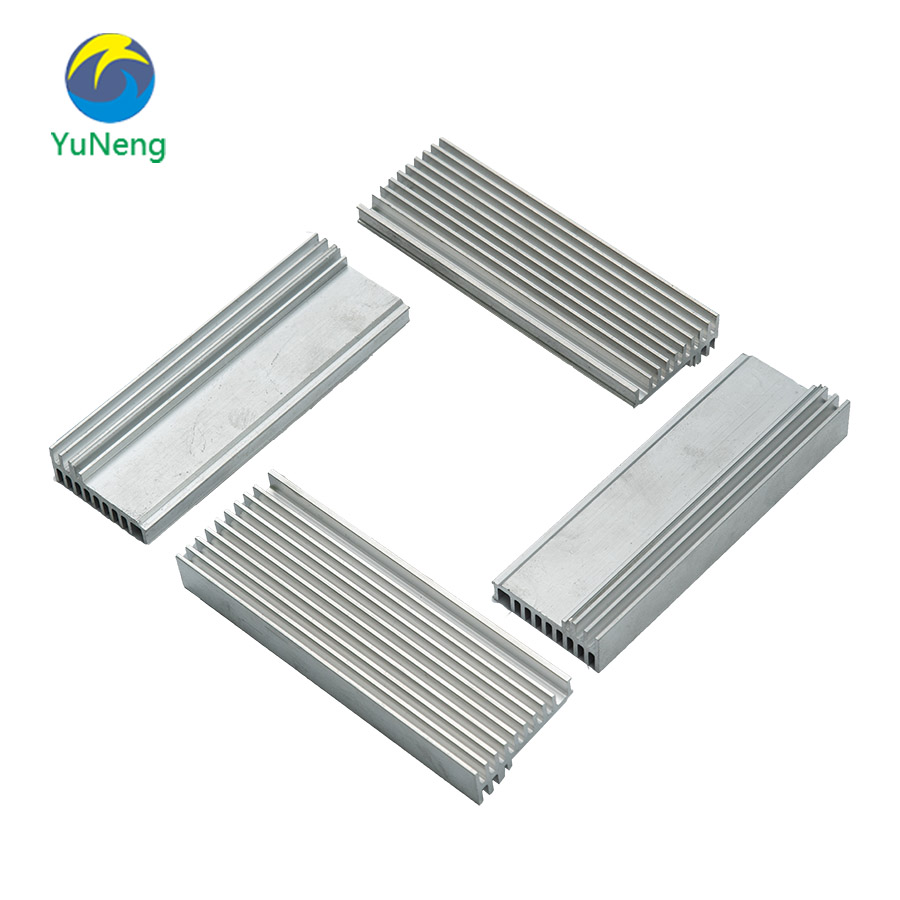At a time when science and technology are developing rapidly, all kinds of electronic equipment, mechanical devices, etc. are like the "heart" of precision operation, continuously injecting power into our lives and production. However, with the improvement of equipment performance, a thorny problem also arises - heat. At this time, the radiator stands out and becomes an indispensable "cool guardian" in the field of science and technology.

The working principle of the radiator seems complicated, but it is actually ingenious. It mainly dissipates heat through three methods: heat conduction, convection and radiation. Taking the common CPU heat dissipation as an example, in the heat conduction process, the heat conduction formula "Q=K×A×ΔT/ΔL" is followed. When a material with a higher thermal conductivity coefficient K is used, the heat transfer area A is increased, and the conduction distance ΔL is shortened, the heat transfer efficiency will be greatly improved. Just like in some high-end computer radiators, a specially designed copper base is used to quickly conduct the heat generated by the CPU. In terms of convection cooling, a high-performance fan developed by a certain brand can effectively increase the effective contact area A and thermal convection coefficient H of the radiator when applied to computer radiators by carefully optimizing the blade shape and speed, according to the thermal convection formula "Q=H×A×ΔT". Compared with ordinary fans, it can take away about 30% more heat in the same time. In addition, the thermal radiation coefficient E of metal radiators that have undergone special surface treatment (such as anodizing) can be improved, and when working in conjunction with other cooling methods, the overall cooling efficiency can be increased by 10%-15%.
The choice of material has a decisive influence on the performance of the radiator. The thermal conductivity characteristics of different materials vary significantly. For example, the thermal conductivity coefficient of copper is about 401W/(m・K), while that of aluminum is about 237W/(m・K). In the field of computer CPU radiators, a full-copper radiator can stably control the CPU temperature at around 70℃ in a full-load test, while an aluminum alloy radiator of the same design has a CPU temperature of around 80℃ under the same conditions. In automobile engine heat dissipation, due to the large engine compartment space and strict weight requirements, aluminum alloy radiators have become the first choice of many automobile manufacturers due to their advantages of light weight, low cost and ability to meet basic heat dissipation needs. For example, after a certain automobile engine uses an aluminum alloy radiator, the engine coolant temperature can be stably maintained in the normal working range of 90℃-100℃ even in the hot summer.
Advanced manufacturing technology has given wings to the improvement of radiator performance. Precision casting technology can create complex and delicate heat dissipation structures. In the manufacture of aviation engine heat dissipation components, the radiator manufactured by this process has a more reasonable internal heat dissipation channel and the heat dissipation efficiency can be increased by 20%-30%. CNC processing technology can achieve high-precision dimensional control and surface treatment. In the manufacture of 5G base station heat dissipation modules, the aluminum alloy Heat sink processed by CNC has a dimensional accuracy of ±0.01mm and a reduced surface roughness, which greatly improves the contact area and heat conduction efficiency between the Heat sink and the heat-generating chip. According to tests, compared with the Heat sink of ordinary processing technology, it can reduce the temperature of base station equipment by 5℃-8℃.
Customized cooling solutions are gradually becoming a trend in the industry. In the server field, a company customized a cooling solution for the data center, and designed a dedicated air duct and radiator structure according to the location, heat generation and spatial layout of different heating components inside the server. Actual operation monitoring shows that compared with the general cooling solution, the customized solution can reduce the overall temperature of the server by 10℃-15℃, and the server failure rate is reduced by about 30%. In Medical Equipment CT scanners, due to the compact internal space of the equipment and extremely high requirements for heat dissipation stability, the customized liquid cooling system can accurately match the heating requirements of the scanning components, ensuring that the temperature fluctuation of the core components is minimal when the equipment is working continuously for a long time, thereby ensuring the stability and accuracy of image acquisition, and the image quality pass rate is increased to more than 98%.
In emerging fields, radiators are even more effective. In the field of new energy vehicles, the innovative liquid cooling solution used in a certain electric vehicle can effectively control the battery temperature in the optimal working range of 25℃-35℃, increase the battery charging and discharging efficiency by about 10%, and extend the battery cycle life by about 20%. In 5G communication base stations, as the power of base station equipment increases, the demand for heat dissipation increases dramatically. A radiator developed by a certain company that combines a new type of heat dissipation material with a heat dissipation structure can reduce the temperature of base station equipment by 10℃-15℃, effectively ensuring the stable operation of 5G base stations and improving the stability and coverage of communication signals. In terms of artificial intelligence computing equipment, a company customized a cooling system for its high-performance GPU computing cluster, which uses a combination of efficient air cooling and liquid cooling technology to stabilize the temperature of the GPU in a safe range under high-load computing, and improve computing efficiency by 15%-20%.
The radiator, a seemingly inconspicuous but crucial component, has been continuously evolving on the road of technological development, safeguarding the efficient and stable operation of many devices. With the continuous advancement of technology, I believe that radiators will continue to break through innovation and bring more convenience and surprises to our lives.









